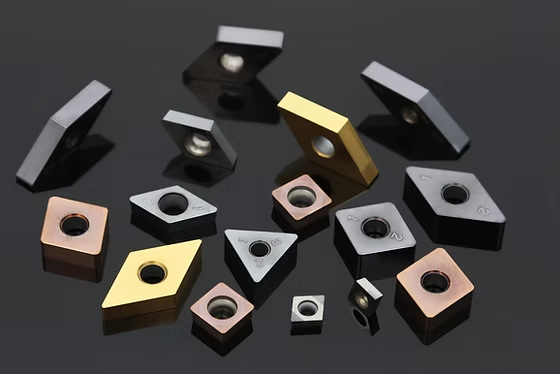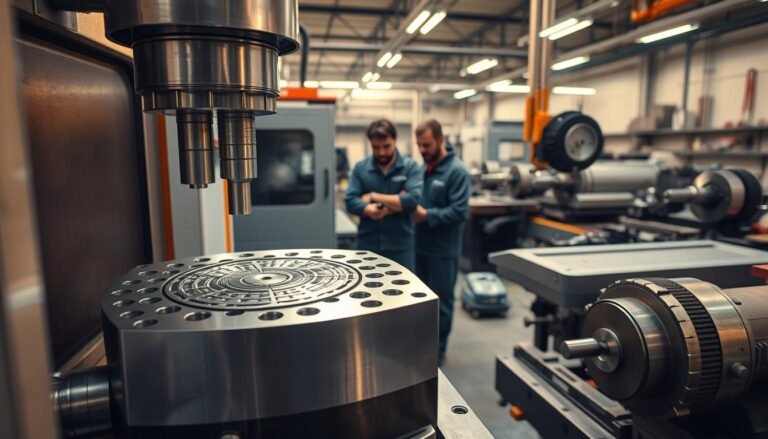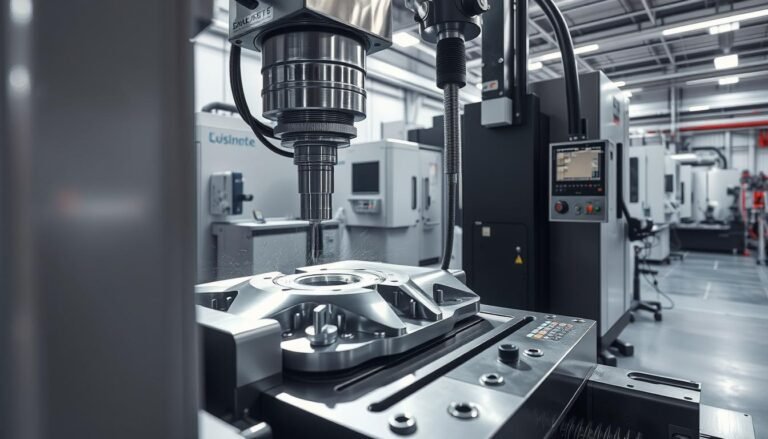The advancement of modern materials science and surface engineering depends heavily on Diamond-Like Carbon (DLC) coatings which represent a revolutionary technology. The exceptional hardness and low-friction properties of DLC coatings unite the best features of natural diamond and graphite to deliver unmatched solutions for aerospace, medical and automotive industries. This paper investigates DLC coatings through an analysis of their chemical structure and physical attributes and different types and uses and benefits relative to conventional materials to help engineers and technical procurement specialists comprehend this advanced technology.
What is DLC Coating?
The amorphous carbon material known as Diamond-Like Carbon (DLC) consists of both sp³ tetrahedral diamond-like and sp² trigonal graphite-like carbon bonds. The amorphous nature of DLC sets it apart from crystalline diamond, as it lacks long-range order; however, its high sp³ bond content imparts diamond-like properties, including exceptional hardness and low friction. The performance characteristics of DLC coatings can be tailored by modifying the sp³/sp² bond ratio and by incorporating hydrogen, silicon, and various metal elements.
The vacuum deposition techniques—Physical Vapor Deposition (PVD), Chemical Vapor Deposition (CVD), and Plasma-Assisted Chemical Vapor Deposition (PACVD)—are methods used to apply diamond-like carbon (DLC) coatings. These techniques enable precise coating deposition onto metals, plastics, and ceramics, resulting in coatings that typically achieve a thickness of 1 to 2 microns.
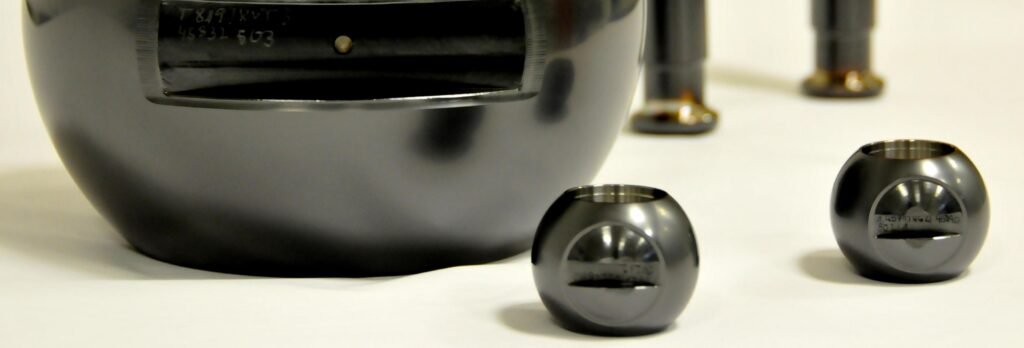
Types of DLC Coatings
DLC coatings are categorized based on their structure and composition, each optimized for specific applications:
- Tetrahedral Amorphous Carbon (ta-C): Composed almost entirely of sp³ bonds, ta-C offers the highest hardness (up to 10,000 HV) and lowest friction coefficient (0.05–0.20). It’s ideal for applications requiring extreme wear resistance, such as aerospace components.
- Hydrogenated DLC (a-C:H): Contains hydrogen to reduce internal stress and improve adhesion, though with slightly lower hardness than ta-C. Commonly used in applications needing flexibility and adhesion, like medical devices.
- Metal-Doped DLC: Incorporates metals like tungsten (W) or chromium (Cr) to enhance toughness and reduce friction, suitable for applications requiring both hardness and ductility, such as automotive parts.
- Graphite-Like Carbon (GLC): Higher sp² bond content results in lower friction but reduced hardness, making it ideal for high-lubricity applications, like sliding components.
By adjusting deposition parameters and dopants, DLC coatings can be customized to meet diverse industry requirements.
Suitability of Non-Hydrogenated DLC Films for Machining Plastics and Sticky Materials
Non-hydrogenated DLC films—such as ta-C (tetrahedral amorphous carbon)—bring a distinctive set of advantages to machining environments where plastics or adhesive-prone materials are involved. Their combination of ultra-thin deposition, exceptional microhardness (often exceeding 5,000 HV), and outstanding anti-adhesive properties sets them apart.
These characteristics are especially valuable for several reasons:
- Minimized Material Buildup: The low surface energy and high smoothness of non-hydrogenated DLC significantly reduce the tendency of plastics and gummy residues to adhere to cutting tools.
- Superior Wear Resistance: The extreme hardness helps to maintain edge sharpness and resist abrasion, even under the friction-intensive conditions typical of polymer machining.
- Enhanced Surface Quality: Reduced sticking means more consistent chip flow, minimizing smearing or melting of plastics on tool surfaces, which leads to improved component finish and dimensional accuracy.
- Extended Tool Life: With both stickiness and abrasion under control, non-hydrogenated DLC-coated tools see much slower wear rates—resulting in longer intervals between tool changes and more stable process performance.
This unique synergy explains why ta-C DLC films have become the coating of choice for machining everything from technical polymers, such as PEEK and PTFE, to sticky elastomers and adhesive-backed materials.
Properties of DLC Coatings
DLC coatings are distinguished by their unique physical and chemical properties, setting them apart from other coatings:
- Hardness: DLC coatings can achieve hardness levels up to 1.5 times that of natural diamond. For instance, ta-C exhibits a microhardness of 9,571 N/mm², 34% higher than uncoated steel (7,133 N/mm², Rockwell C 60). Its Vickers hardness is over twice that of uncoated steel, with elasticity up to 86% (compared to 35% for steel).
- Wear Resistance: DLC coatings offer exceptional resistance to abrasive and adhesive wear. DLC with isolated carbon nanoparticles can reduce wear rates by 60%, making it ideal for high-contact-pressure applications like rolling and sliding contacts.
- Friction Coefficient: When in contact with polished steel, DLC coatings exhibit a friction coefficient of 0.05–0.20, significantly reducing energy losses.
- Corrosion Resistance: DLC coatings effectively protect substrates from oxidation and corrosive environments, enhancing durability.
- Electrical Properties: DLC can serve as a high-resistivity insulator while exhibiting hopping conductivity via quantum tunneling, suitable for electronic and semiconductor applications.
- Biocompatibility: Softer DLC coatings demonstrate superior biocompatibility, widely used in medical implants to reduce thrombosis.
- Aesthetics: DLC coatings offer a deep black or charcoal finish, often used in decorative applications, such as luxury watches and jewelry.
These properties are influenced by deposition methods, with factors like bias voltage, coating thickness, and interlayer materials significantly affecting performance.
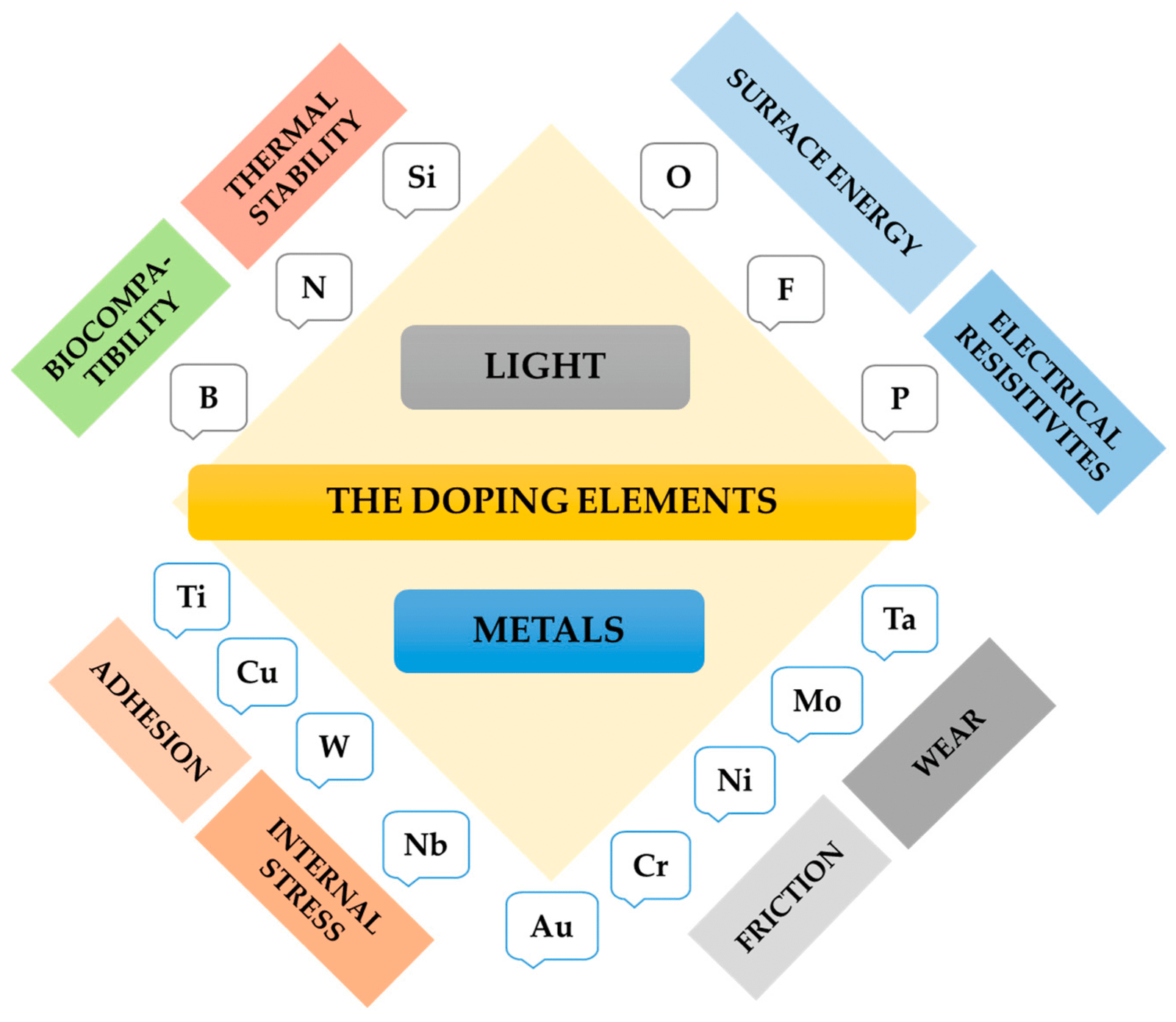
Applications of DLC Coatings
The versatility of DLC coatings makes them indispensable across multiple industries:
- Aerospace: Applied to bearings, gears, and turbine components to withstand high loads and extreme environments, extending service life.
- Automotive: Used on engine components, camshafts, and axles to reduce friction and improve fuel efficiency. For example, DLC-coated piston rings significantly extend engine life, commonly seen in Formula 1 racing and superbikes.
- Medical: Employed in artificial joints, heart stents, and surgical tools due to biocompatibility and wear resistance, minimizing rejection risks and thrombosis.
- Electronics: Protects hard disk platters and read/write heads, preventing head crashes and wear.
- Cutting Tools: Coated on milling cutters, drills, and molds to reduce abrasive wear and extend tool life.
- Weapons: Provides corrosion resistance and durability for military and civilian firearms, meeting MIL-PRF-32711 standards.
- Space Exploration: Used in “chameleon” coatings to adapt to spacecraft launch, orbit, and re-entry demands, providing lubricity in vacuum environments.
- Energy Storage: Enhances lithium batteries, improving capacity retention by 40% and cycle life by 400%.
DLC coatings’ low friction and wear resistance make them critical for high-performance applications, from racing engines to battery technology.
Advantages of DLC Coatings Compared to Traditional Coatings
DLC coatings often outperform traditional coatings like Titanium Nitride (TiN) and Chromium Nitride (CrN). Here’s a comparison table:
| Property | DLC Coating | TiN Coating | CrN Coating |
|---|---|---|---|
| Hardness (HV) | 2000–10,000 | 2000–3000 | 1500–2500 |
| Friction Coefficient | 0.05–0.20 | 0.4–0.6 | 0.2–0.4 |
| Corrosion Resistance | Excellent | Good | Excellent |
| Color | Black | Gold | Silver-Gray |
| Typical Applications | Low-friction parts, cutting tools, medical implants | Cutting tools, decorative coatings | Corrosion-resistant parts, forming tools |
- Hardness: DLC coatings far exceed TiN and CrN in hardness, offering superior wear resistance.
- Friction Coefficient: DLC’s low friction coefficient outperforms TiN and CrN, reducing energy loss in moving parts.
- Corrosion Resistance: DLC and CrN excel in corrosion resistance, but DLC’s overall performance is more comprehensive.
- Aesthetics: DLC’s black finish is preferred in decorative applications, while TiN’s gold color is often used for aesthetic purposes.
DLC coatings’ unique combination of hardness, low friction, and versatility makes them the preferred choice for many high-demand applications.
DLC vs. Hard Chrome: Application Insights
DLC coatings are increasingly replacing hard chrome in demanding industries—and for good reason. While hard chrome has long been favored for its durability and wear resistance, DLC coatings offer several decisive advantages:
- Superior Hardness & Wear Resistance: DLC coatings offer a hardness two to five times greater than traditional hard chrome plating, translating to longer service intervals and reduced downtime—particularly valuable in automotive engine parts and high-wear aerospace fasteners.
- Lower Friction: Where hard chrome provides adequate wear protection, DLC’s ultra-low friction outperforms in dynamic applications. This means less heat generation and less energy loss, making DLC an ideal upgrade for injectors, cutting tools, and plastic injection molds.
- Enhanced Corrosion Resistance: Unlike chrome, DLC resists pitting and flaking in aggressive environments, extending service life for industrial machinery, forming dies, and medical instruments that demand consistent performance under harsh conditions.
- Environmental Impact: DLC deposition processes avoid the hexavalent chromium compounds associated with hard chrome, addressing stringent environmental and workplace safety regulations—an increasingly important factor in industries from manufacturing to aerospace.
- Aesthetic Appeal: Where luxury watches and jewelry once relied on hard chrome’s reflective finish, DLC is now the premium choice, combining a sleek dark appearance with greater resistance to scratches, tarnish, and wear.
In applications where both longevity and performance are essential—especially where environmental compliance and surface quality matter—DLC coatings consistently surpass the legacy of hard chrome.
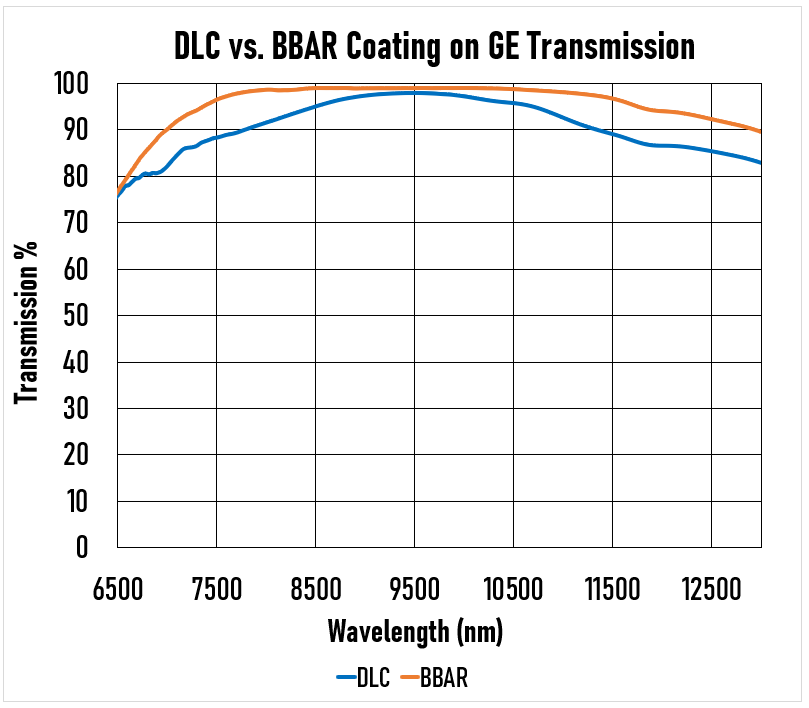
Deposition Methods
DLC coatings are applied using advanced vacuum deposition techniques:
- Physical Vapor Deposition (PVD): Includes magnetron sputtering and cathodic arc deposition, ideal for uniform thin films.
- Chemical Vapor Deposition (CVD): Forms coatings through hydrocarbon gas decomposition on the substrate surface.
- Plasma-Assisted Chemical Vapor Deposition (PACVD): Combines CVD with plasma technology to enhance deposition rates and precisely control coating properties.
These methods allow precise control over coating thickness, structure, and performance. For example, bias voltage during deposition can adjust the sp³/sp² ratio, tailoring hardness and friction properties.
Environmental Benefits
DLC coatings promote sustainability by significantly extending component life. For instance, a 1-micron tetrahedral amorphous carbon (ta-C) coating on 304 stainless steel can extend service life from one week to over a year, while a 2-micron coating could theoretically last 85 years. This durability combats planned obsolescence, supporting a sustainable economy.
Selecting the Right DLC Coating
Choosing the appropriate DLC coating involves considering several factors:
- Substrate Material: Ensure compatibility, as non-metallic substrates may require interlayers.
- Hardness Requirements: ta-C is ideal for extreme hardness, while hydrogenated DLC suits applications needing flexibility.
- Friction Needs: Hydrogenated or metal-doped DLC offers lower friction.
- Environmental Conditions: Metal-doped DLC is suitable for corrosive environments.
- Aesthetic Requirements: Coating color and gloss can be customized for decorative purposes.
- Budget: Complex coatings are costlier, requiring a balance between performance and cost.
By understanding these factors, engineers and procurement professionals can select the optimal DLC coating for their needs.
Conclusion
The surface engineering technology known as DLC (Diamond-Like Carbon) coating represents a revolutionary advancement due to its unique combination of hardness, low friction properties, and exceptional durability that surpasses conventional coatings. Its diverse applications in aerospace and medical implants highlight its critical role in modern manufacturing. The growing use of DLC coatings is poised to drive technological progress across various industries. Engineers and procurement professionals must understand DLC coatings, as this knowledge enables them to select optimal surface treatments that enhance performance and extend the lifespan of components.


